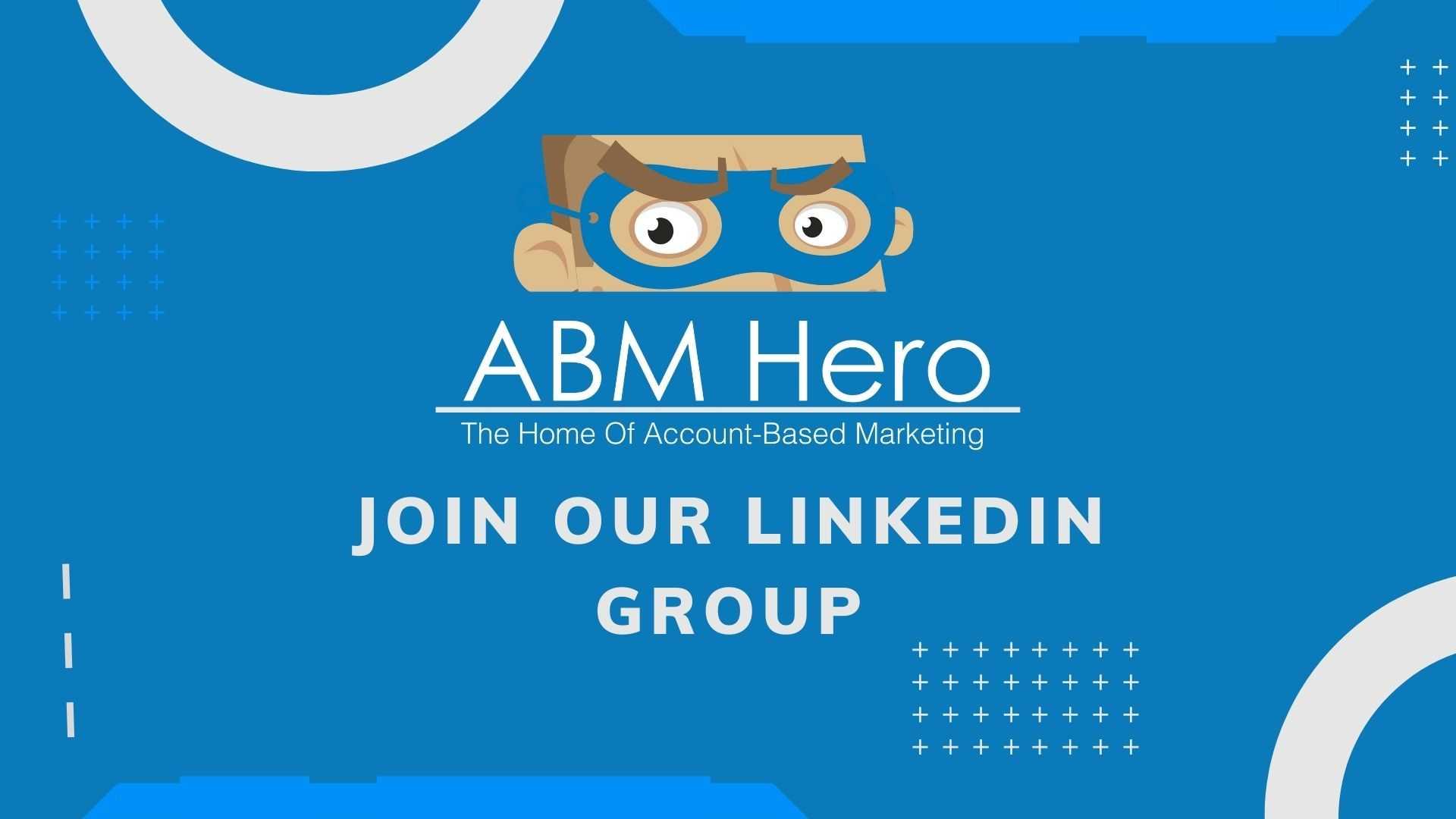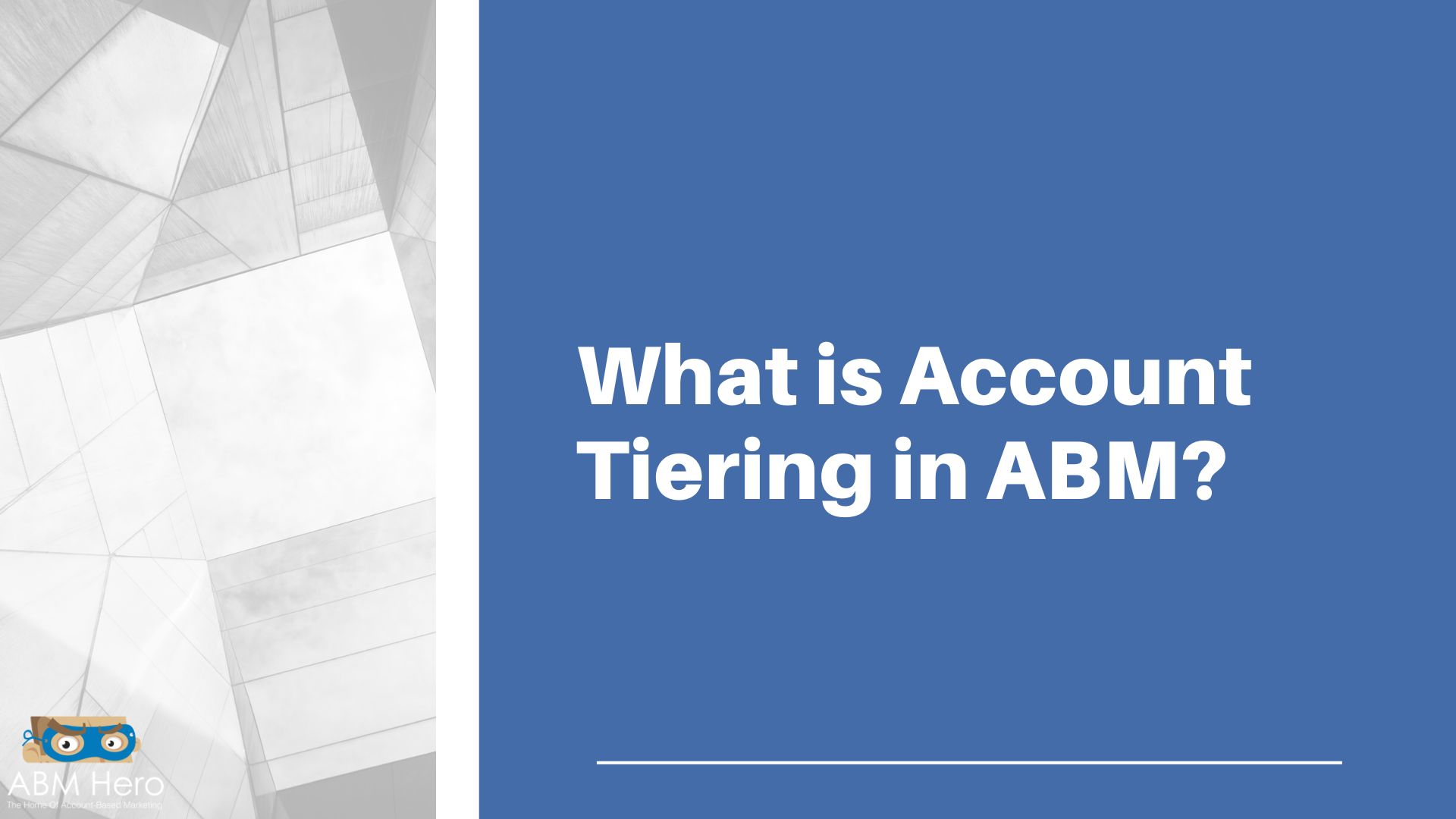Account tiering is an emerging buzzword for marketers all over the globe. In a nutshell, it’s the process of grouping your customers into tiers based on their value to your business.
It allows you to dedicate your marketing efforts to the customers who will most likely generate revenue for your company.
Account tiering has several benefits, including improved customer retention and increased customer lifetime value. This blog post will take a closer look at account tiering and how it can benefit your business.
What is Account Tiering?
Account tiering is a crucial component of account-based marketing (ABM).
Account-based marketing (ABM) is a strategy that focuses on key accounts with the highest potential for revenue growth. To be successful, ABM requires a deep understanding of each account, including the decision-makers, influencers, and end users.
In ABM, businesses focus their marketing efforts on a select number of high-value accounts rather than casting a wide net with their marketing campaigns.
Account tiering is a way of segmenting accounts based on factors such as purchase history, account size, potential revenue, and other relevant factors.
It allows businesses to tailor their marketing efforts to each account and prioritize the most likely to result in a sale.
Account tiering can be a very effective way to increase the ROI of your marketing efforts and to focus your resources on the accounts that are most likely to result in a sale.
The Account Tiering Approach
The account tiering approach is a systematic way of grouping accounts based on specific criteria. By using this approach, businesses segment their customer base and target different marketing campaigns to various groups.
There are three ways to tier an account:
1. Strategic ABM / One-to-One Approach
2. Lite ABM/ One-to-Few Approach
3. Pragmatic ABM or One-to-Many Approach
One-to-One Approach
Strategic ABM, also known as the one-to-one approach, is a laser-focused strategy where sales and marketing work together to customize an experience for a single account.
Personalization should be a priority for one-to-one ABM campaigns. In one-to-one ABM, your goal is to either start a conversation or alter the way an account currently perceives your business.
The one-to-one approach is based on the belief that every customer is unique and therefore requires a unique approach. The system is a very effective way of marketing to customers as it ensures they have a positive experience with your brand.
This approach can be used in various ways, such as creating customized products or services, tailoring marketing messages to the individual, or providing a unique customer service experience.
The one-to-one approach is excellent for building long-term relationships with customers and creating a loyal customer base.
Examples of initiatives used in Strategic ABM are:
- Custom Landing Pages with curated content.
- 3D Mails, including door openers and post-meeting packages.
- Personalized outreach at every step of the sequence.
- Exciting deals and special discounts.
One-to-Few Approach
For small groups of accounts that have similar characteristics, sales and marketing use the one-to-few approach to craft personalized experiences.
You target accounts in clusters of typically 50 to 100 accounts for your planned campaign using the ABM approach. The accounts are grouped based on a crucial characteristic or standard profile.
It is vital because your targeted and pertinent campaign will focus on each cluster.
The ITSMA defines One-to-few ABM as creating and executing a tailored campaign for account clusters with similar needs or interests.
Most people understand One-to-few marketing to mean that you are focusing on groups of accounts based on specific segment traits or profiles.
One-to-few ABM is still a highly personalized strategy, but these are not always the accounts with the highest value you are pursuing.
- Customer-centric Landing Pages for specific industries
- Highly-personalized outreach to crucial personas
- Small tokens and gift items
One-to-Many Approach
Pragmatic ABM is a tool that helps organizations to understand better and predict customer behavior.
It does so by providing a framework for building customer behavior models that incorporate customer data and organizational knowledge.
Pragmatic ABM has been shown to improve predictive accuracy and provide insights that can help organizations make better customer engagement decisions.
The main objective of programmatic ABM is typically to increase engagement.
A Tier 3 account may be promoted to Tier 2 status and receive a more individualized experience once the account has shown sufficient engagement.
Most of the engagement-boosting initiatives included in programmatic ABM should also be observable in ABM Lite and strategic ABM.
The Importance of Account Tiering
One thing is sure; account tiering helps marketers bring a suitable message to different sets of customers. It allows marketing efforts to land on a well-engaged audience ready to take a bite of the piece of information that you want to deliver.
Here are some of the reasons why account tiering is essential in conducting account-based marketing:
Good for Offering Different Levels of Service and Support
B2B companies often offer different tiers of service and support, and account tiering can help them do this effectively.
By assigning different levels of access and privileges to other accounts, companies can ensure that each account gets the level of service and support appropriate for its needs.
It can help companies save money and resources by ensuring that each account is only getting the level of support it needs and nothing more.
Additionally, account tiering can help companies keep track of their different customers and accounts more efficiently, as they can be grouped according to their level of access and privileges.
It can make it easier for companies to provide exemplary service and support to each account and help prevent mix-ups and other turbulent problems.
Perfect for Increasing Customer Satisfaction and Loyalty
Account tiering is a way for marketers to segment their customers based on their level of engagement and value.
By doing this, marketers can more easily identify the customers who are most likely to be satisfied with their purchase and encourage them to become loyal to the brand.
In many cases, customers who are highly engaged with a brand are also the most valuable to the company. These customers are more likely to make repeat purchases, recommend the brand to others, and provide valuable feedback.
Marketers can more easily identify these high-value customers by segmenting their customer base and catering to their needs. In addition, account tiering can also help marketers identify potential problem areas.
Best Way to Differentiate
B2B companies often face competition, and account tiering can help them differentiate their brand.
By offering different levels of service or benefits to other customers, B2B companies can show that they value their customers and are willing to invest in providing them with the best possible experience. It can help to build customer loyalty and attract new business.
Increase Revenues by Up-selling and Cross-selling
One way that B2B marketers can increase revenues is by account tiering. It involves segmenting customers into different tiers based on spending power, account size, or relationship history.
By doing this, marketers can create targeted up-selling and cross-selling strategies for each customer tier. For example, a marketer might create a tier 1 account consisting of customers with high spending power and frequent buyers.
For these customers, the marketer would then focus on up-selling them to higher-priced products or services. On the other hand, a tier 2 account might consist of customers with less spending power but still interested in the company’s products.
The takeaway here is that account tiering is an account-based marketing strategy that focuses your resources on the accounts that are most likely to generate revenue. Using this strategy, you can allocate your resources more efficiently and effectively, leading to increased revenue and ROI.





